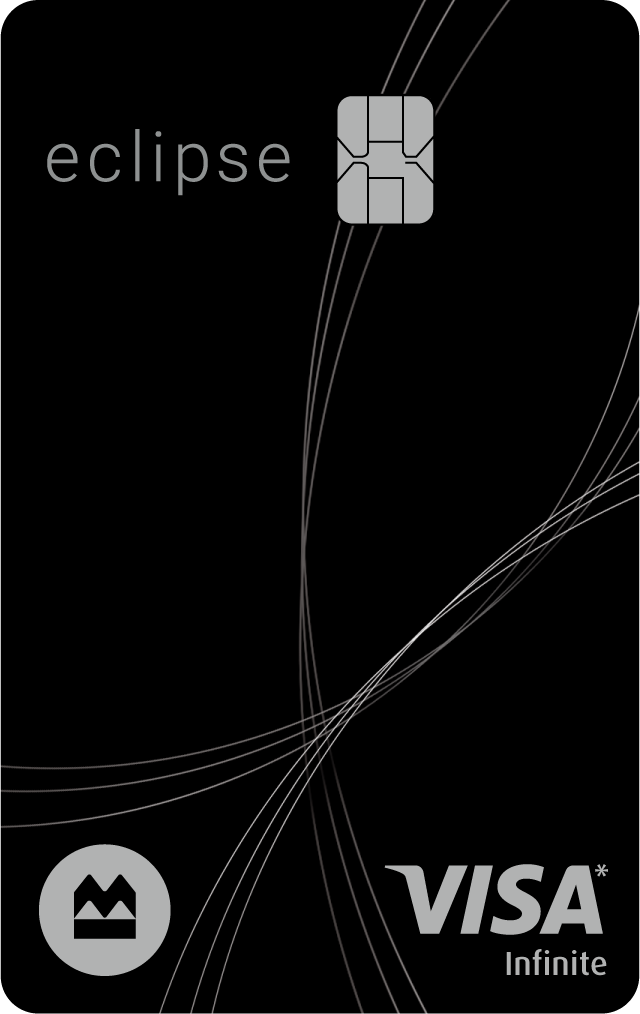This month, BMO has announced two new credit cards: the BMO eclipse Visa Infinite and the BMO eclipse Visa Infinite Privilege.
You can refer to my earlier post for everything you need to know about these new products, including their welcome bonuses, fee structure, earning rates, travel benefits, and insurance, as well as the two key innovations that set them apart: the boost to earning rates upon adding a supplementary card and the annual lifestyle credits.
In this post, I wanted to take a more critical look at the BMO eclipse Visa Infinite in particular, which is the bank’s new “lifestyle credit card” that’s designed with urban millennials and young professionals in mind.
How does this new product stack up compared to its peers in the lifestyle card market? In what ways might the new BMO eclipse Visa Infinite still have room for improvement, and in what ways does it… eclipse the competition?
In This Post
- BMO eclipse Visa Infinite vs. Other 5x Cards
- Key Information
- Earning Rates
- Insurance Coverage
- Conclusion
BMO eclipse Visa Infinite vs. Other 5x Cards
Placing heavy emphasis on the ability to earn 5x points on everyday purchase categories like dining, groceries, gas, and transit – categories that closely align with the average millennial’s lifestyle – the BMO eclipse Visa Infinite is pretty clearly aimed at competing with the other attractive “five times the points” products on the market: the American Express Cobalt Card and the Scotiabank Gold American Express.
Through a series of charts, we’ll compare these three products in all the ways that matter, along with some deeper analysis after each segment.
Key Information
First up: the cards’ key characteristics.
Note that our discussion will draw upon the established Points Valuations here at Prince of Travel, which take into account the average redemption value that one can extract from a given points currency with a little bit of effort put in.
BMO eclipse | American Express | Scotiabank Gold | |
Card network | Visa | American Express | American Express |
Acceptance | Relatively strong | Relatively weak | Relatively weak |
Income requirement | $60,000 (personal) | $0 | $12,000 (personal) |
Points currency | BMO Rewards points | Amex MR Select points | Scotia Rewards points |
Optimal redemptions | Travel purchases: | Transfer to Marriott Bonvoy, | Travel purchases: |
0.71 cents/point | 1.4 cents/point | 1 cent/point | |
Ease of redeeming | Must book travel through the BMO Rewards travel portal | Can book travel independently and then use points to offset the purchase | Can book travel independently and then use points to offset the purchase |
Welcome bonus | 40,000 BMO Rewards points: 25,000 BMO Rewards points upon spending $3,000 in the first three months; 15,000 BMO Rewards points 12 months after account opening | 30,000 MR Select points: 2,500 MR Select points in each of the first 12 months that you spend $500 | 25,000 Scotia Rewards points upon spending $1,000 in the first year |
First-year welcome bonus value, upon reaching minimum spend | $200 | $504 | $260 |
Fees | $120 annual fee, | $10 monthly fee | $120 annual fee |
Credits | $50 lifestyle credit per calendar year | – | – |
Net value in the first year (welcome bonus value, less fees, plus credits) | $300 | $384 | $140 |
Supple-mentary | $50 | $0 | $29 |
Foreign transaction fee | 2.5% | 2.5% | 0% |
Compared to its immediate peers, the BMO eclipse Visa Infinite excels in a few areas, but also falls short in others.
On the one hand, it will enjoy much wider acceptance across Canada as a Visa product compared to the other two millennial-oriented products, which are both on the American Express network.
Additionally, the BMO eclipse is the only product out of all three to offer an annual credit of any kind, in the form of the $50 lifestyle credit which is granted on a calendar-year basis (and thus allows you to claim one set for 2020 and another for 2021 if you were to apply now).
However, one notable weakness – and this is something of a theme whenever we talk about BMO around here – is that BMO Rewards points can only be redeemed at a rate of 140 points = $1 (0.71cpp) against travel purchases.
Therefore, they aren’t quite as valuable as Amex MR Select points or Scotia Rewards points, both of which allow you to book travel at a rate of 100 points = $1 (1cpp), with MR Select points being transferrable to hotel partners like Marriott Bonvoy as well.
Not only that, but another limitation of BMO Rewards is that you must book travel through BMO’s in-house travel portal; meanwhile, both Amex MR Select and Scotia Rewards are more flexible, allowing you to book any type of travel you want before using your points to offset the travel purchase on your statement.
(All three points currencies, however, will refund you directly on the card, rather than refunding the points, if you happen to change your mind about certain types of upcoming travel plans.)
Thanks to the ability of double-dipping on the $50 lifestyle credit, the BMO eclipse Visa Infinite does offer a pretty strong net value of $300 in the first year, which is superior to the Scotia Gold Amex’s current offer and competes well with the Cobalt.
Meanwhile, the only category in which the Scotia Gold Amex outshines the others is the 0% foreign transaction fee. Personally, I think it’s a missed opportunity for BMO to win the hearts of more travel-oriented millennials by also eliminating their 2.5% foreign transaction fees on its new lifestyle product.
Looking at the key characteristics, I think it’s safe to say that the BMO eclipse Visa Infinite shows a little bit of promise, but isn’t quite changing the game just yet…
Earning Rates
…so let’s see if it can shine more brightly through one of its core features, the 5x earning rates.
BMO eclipse | American Express | Scotiabank Gold | |
Dining & Groceries | 5x BMO Rewards points | 5x MR Select points | 5x Scotia Rewards points |
Gas | 5x BMO Rewards points | 2x MR Select points | 3x Scotia Rewards points |
Transit | 5x BMO Rewards points | 2x MR Select points | 3x Scotia Rewards points |
Entertain-ment | 1x BMO Rewards points | 1x MR Select points | 5x Scotia Rewards points |
Streaming services | 1x BMO Rewards points | 1x MR Select points | 3x Scotia Rewards points |
Travel | 1x BMO Rewards points | 2x MR Select points | 1x Scotia Rewards points |
All other purchases | 1x BMO Rewards points | 1x MR Select points | 1x Scotia Rewards points |
Annual maximum on 5x earn rate | $50,000 | $30,000 | $50,000 |
Supple-mentary card boost | 10% | – | – |
As we can see here, not all “cards that earn five times the points” were created equal. Since BMO Rewards points can fetch a maximum value of 0.71cpp, earning 5x BMO Rewards points is equivalent to an effective real return of only 3.57%.
On dining and groceries, all three cards will earn 5x points… but the Scotia Gold Amex has a stronger real return of 5% because its Scotia Rewards points are worth 1cpp, while the Cobalt does even better because its Amex MR Select points can also attain higher value by transferring to Marriott Bonvoy.
Where the BMO eclipse Visa Infinite beats the competition is in the gas and transit categories, where it continues to deliver 5x points, but the Cobalt and Scotia Gold Amex have dipped down to lower earning rates.
This allows the BMO eclipse Visa Infinite to offer the highest return, despite the lower inherent value in BMO Rewards points. If you put a lot of spending into the gas and transit categories (maybe you’re just someone who likes to move around a lot), then the BMO eclipse Visa Infinite will definitely be a good fit.
Unfortunately, as we’ve touched upon before, the 1x BMO Rewards points earning rate on the “all other purchases” category isn’t really competitive when it comes to using the card for general non-bonused spending. Both of its peers listed here will give better value, as will several other choices on the market.
All three cards have an annual cap on the amount of purchases that qualify for the accelerated 5x earning rate (in the case of the Scotia Gold Amex, the cap is combined with the 3x earning rate too). This is to prevent, say, someone who buys millions of dollars’ worth of groceries to resell at a farmer’s market from making out with crazy points balances.
In this regard, the BMO eclipse Visa Infinite is more generous than the Cobalt Card with an annual cap of $50,000 instead of $30,000, which I’m sure will pique the interest of those of you who make frequent large purchases at the grocery store.
Finally, the BMO eclipse Visa Infinite does have one very unique advantage up its sleeve: the 10% boost to earning rates when you add a supplementary card.
If you go down this path, then the BMO eclipse gains an even larger edge over its peers in the gas and transit categories, and also slightly makes up the shortfall in dining and groceries as well. I’ll leave the calculation of the exact rates of return as an exercise to the reader.
Insurance Coverage
The final area of comparison is in the insurance and protection benefits offered by this trio of lifestyle credit cards.
BMO eclipse | American Express | Scotiabank Gold | |
Emergency medical | $5,000,000 | $5,000,000 | $1,000,000 |
Trip cancellation/ | – | – | $1,500 (per person) |
Flight/trip delay | – | $500 | $500 |
Delayed baggage | – | $1,000 | |
Lost or stolen baggage | – | $500 | $1,000 |
Common carrier accident | $500,000 | $250,000 | $500,000 |
Hotel/motel burglary | – | $500 | $1,000 (Canada/US only) |
Auto rental collision/loss damage waiver | MSRP up to $65,000 | MSRP up to $85,000 | MSRP up to $85,000 |
Mobile device | $1,000 | – | – |
Purchase security | 90 days | 90 days, up to $1,000 | 90 days |
Extended warranty | Doubles the warranty, up to one additional year | Doubles the warranty, up to one additional year | Doubles the warranty, up to one additional year |
Looking at the insurance packages, it must be said that the BMO eclipse Visa Infinite is somewhat lacking when compared to the other two millennial-oriented products.
As a “lifestyle” card rather than a travel rewards card, the BMO eclipse Visa Infinite may not have placed a great deal of importance on travel insurance… but everyone, including BMO’s competitors, knows that millennials are mad about travel these days.
Trip cancellation, trip interruption, flight and trip delay, baggage delay, lost or stolen baggage, and hotel/motel burglary insurance are all conspicuously absent from the BMO eclipse Visa Infinite’s insurance provisions, all of which are offered by one or both of the competing cards.
Mobile device insurance of up to $1,000 is a solid perk in this segment, but in my view, it doesn’t quite make up for the lack of other types of coverage.
Conclusion
After comparing the BMO eclipse Visa Infinite to its closest competitors in the landscape, I think it’s fair to say that BMO has shown up at the table to play… but the bank still has some way to go until it can claim a comprehensive win against their fellow Canadian credit card issuers.
I think we can say that the BMO eclipse Visa Infinite does indeed give the Amex Cobalt and the Scotia Gold Amex some much-needed competition in terms of credit cards that urban millennials and young professionals would like.
However, as things stand, I think there’s only a certain segment of millennials who would opt for the BMO eclipse: those who simply want to feel like they’re maximizing their points without having to put too much thought into it. After all, “five times the points” sounds great on paper, but the lustre fades somewhat when you look closer and notice that the inherent value of BMO Rewards points is still lagging behind its peers.
If BMO wishes to rise to greater prominence in the Canadian credit card landscape, it must improve the value proposition of its BMO Rewards program to boost the redemption value (perhaps by adding a few useful loyalty program partners) and make it easier to redeem points (for example, let people use points to offset any travel they book, rather than making them book through the BMO Rewards portal).
Having said that, more competition is always welcome, and ultimately I’m very glad to see BMO raising their game with a set of brand-new credit cards, loading them up with innovative new features, and putting out an enticing value proposition for those who’d like to try out them out – especially during the first year.
















Hey Rick! Big fan, thanks for all your hard work!
In here you mention the ability of double-dipping on the $50 lifestyle credit. What exactly do you mean by that, and is that possible on the Infinite Privilege card as well? Curious because that lifestyle credit is $200.
Thanks!
It means you’re able to get a $50 lifestyle credit in 2021 and another in 2022, if you were to sign up now. So if you didn’t want to renew the card beyond the first year, you’d effectively get $100 in credits. The same is true for the Infinite Privilege version, you’d get $400 in credits before you need to pay a second year’s annual fee.
Ricky, would you ever consider writing an article on how to “maximise” the value of the BMO Rewards program, if there was truly a way to find value in it?
I’d consider it, but it’d be a pretty short article:
– Book travel through the BMO Rewards portal or over the phone at 0.71cpp
– If you can’t find any travel you’d like to book, book a car rental that you might change your mind about in the future 😉
Hi Ricky, you did not mention the customer service experience. AMEX is known for superior customer service vs ScotiaBank/ScotiaRewards. Ie: Scotia Amex has great insurance on paper, but call into ScotiaRewards for assistance, and you will get tossed around like a hot potato! Speaking from numerous unfortunate experiences.
Thanks for the article!
1 correction: 2x points for gas with the cobalt
Corrected, thank you!
Ricky, great article. Wanted to touch base on meeting some of the minimum spending requirement techniques. I know you wrote about them earlier such as the Ikea 365 day hold and return trick, do you happen to have the link to that article? I been looking for it and can’t seem to locate it. Thank you.
I don’t think I’ve written about the Ikea thing specifically, though you may be thinking about the refundable hotel trick?
https://princeoftravel.com/blog/all-about-refundable-hotel-trick/
Ricky. This is my first time to comment although I have been following your blog for some time now. I wanted to highlight my experience with the Scotia Amex card when using it abroad. There are no foreign transfer fees as they advertised but you do not get the bonuses. So for say groceries aboard you do not get 5% in Scotia reward points. You just get the 1% regular non bonus reward points on the converted transaction amount. I complained to Scotia and had to go to their head office late in September to complain after the change. I am surprised that all commentators continue to reaffirm the benefit and nobody has corrected this. You should know that when I complained that their advertising is false they did not refute. I therefore would not use this card for any activity overseas. Better to use the Scotia Passport Visa which gives 2% for grocery or HSBC card which gives 1.5 % for all spending, with oth cards also not charging foreign fees. I thought I would let you know on this. Thanks
Thanks for letting me know Shabbir. A few others have mentioned that to me in the past so it seems like a consistent issue, which does indeed take some of the shine away from the Scotia Gold Amex.